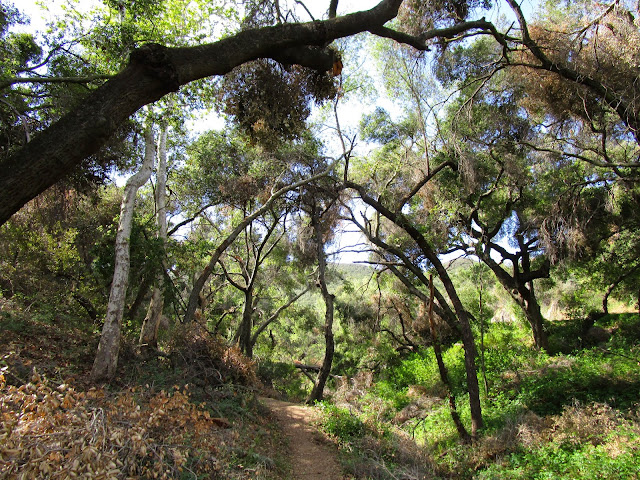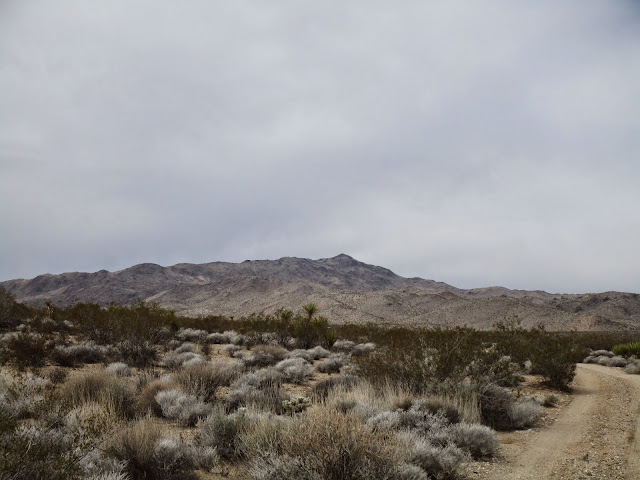Distance: 2.3 miles round trip on trail
Summit Elevation: 2004' (high point on trail)
Elevation Gain: 360'
Elevation Gain (in Empire State Buildings): 0.28
Round trip time: 1 hour
Recommended water: 16 oz.
Parking/Fees: Adventure Pass
Difficulty: Easy
Parker and I headed out for this short and popular loop hike just off Ortega Highway (hwy 74) in the Santa Anas. The large parking lot across from the Ortega Candy Store is the starting and ending point for the loop. Restrooms are available and an Adventure Pass is required if you are planning to use the facilities. The Adventure Pass requirement was ruled illegal unless you use the provided amenities. I always play it safe and display it in national forest areas, though there were many cars parked there without one.
The loop trail starts on the north side of the parking lot and in about a quarter mile descends to San Juan Falls. Like most of the local waterfalls, it had been reduced to a trickle due to drought. We continued to descend south to a creek at about the half way point, then wandered through an oak shaded area next to the creek. Patches of poison oak lurked just off trail in a few places, but none of it intruded into the well maintained trail. There is a junction with the Chiquito Trail just past the creek. Shortly, we turned north again parallel to Ortega Highway and the noise of traffic blended with the nature sounds. We were almost to the Upper San Juan Campground when the hiker in front of us stopped. When we caught up to her, she said a snake was in the trail. Indeed, a juvenile rattlesnake lay half way across the trail, either basking or hunting, but oblivious to the nearby humans. As soon as she recognized our presence, the rattle came to life and she slithered into the grass. The rest of the loop was less rocky than the beginning and we were back at the parking lot in an hour. Flying bugs are starting to gain strength near the creek, so I recommend bug spray from now through the summer. This trail is family and dog friendly. Bikes are not allowed.
Here is falls flowing a couple of years later


















































